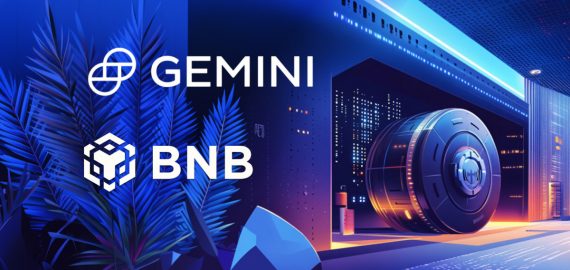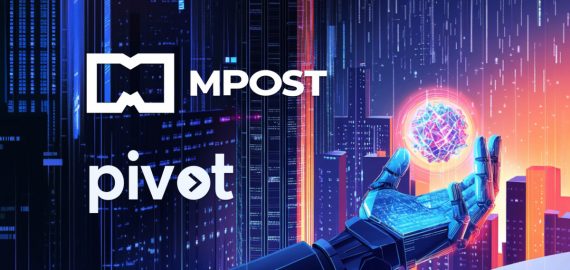Top 5 Liquid Restaking Protocols Built on Top of EigenLayer


In Brief
EigenLayer’s liquid restaking trend in 2025 aims to enhance ETH holders’ capital efficiency, retain liquidity, and contribute to the ecosystem’s growth and decentralization.
Spearheaded by EigenLayer, liquid restaking is emerging as a major 2025 trend in the DeFi space. By reutilizing locked tokens in third-party infrastructure protocols on top of the main network, ETH holders can boost the capital efficiency of their assets and maintain the flexibility that comes from retained liquidity while contributing to Ethereum’s ecosystem growth and decentralization.
In this article, we will explain how the creation of EigenLayer became a game-changer for crypto investors and give examples of some of the top strategy managers built on top of it.
Let’s dive in!
Staking and Liquid Restaking Explained
To understand this concept, one must first grasp the basics of traditional and liquid staking. We’ll begin with the fundamentals.
Traditional staking
To put it briefly, it’s a mechanic where one deposits a specified amount of tokens onto the Beacon Chain smart contract. These assets act as a security deposit, allowing $ETH holders to be a part of the Ethereum PoS consensus and contribute to network security by validating blocks. For their pivotal role in ensuring network operation, stakers are awarded rewards for each block they create.
However, traditional staking has a high barrier to entry for ordinary users. Not only does it require maintaining a validator, but it also has minimal entry requirements (e.g., 32 ether on the Ethereum network).
Liquid staking
Protocols like Lido, Rocket Pool, Stader, etc., solve the entry barrier problem by providing liquid staking crypto services. They allow anyone to participate in PoS consensus without the necessity to maintain a validator node or comply with minimal entry requirements. They offer users Liquid Staking Tokens (LSTs) as a “receipt” for their positions, which may then be used further for various DeFi farming strategies.
Restaking
In addition to contributing to main network security (like staking in Ethereum network validators), users can leverage their assets to secure third-party protocols and generate an additional revenue stream from this security provision, boosting the capital efficiency of their assets.
Liquid restaking
And now, some protocols have taken this concept one step further. They provide their users with Liquid Restaking Tokens (LRTs), allowing them to retain all staking yields and the flexibility that comes with retained liquidity while boosting the yield potential of their assets.
Liquid Restaking on EigenLayer
An innovative protocol on Ethereum, EigenLayer has introduced a new crypto primitive – restaking and LRTs. It was built as middleware that connects stakers directly with infrastructure developers, allowing the latter to leverage Ethereum’s security layer without having to maintain their own validators.
This is done by hosting a variety of Actively Validated Services (AVSs), essentially any infrastructure services seeking to incorporate Ethereum’s security. Cross-chain bridges, Rollups, and keeper and oracle networks are some examples of such services.
$ETH and LSTETH holders can bring their assets to Eigenlayer and simultaneously contribute to Ethereum’s consensus and third-party protocol security. However, this creates additional risks associated with slashing. Higher risk necessitates higher returns, so restakers enjoy additional yields from fees of AVSs they help to secure.
As an incentive to start contributing, you receive points for their contribution to its ecosystem. The anticipation for the EigenLayer Airdrop based on accumulated points has started a “Points-farming season,” contributing to its skyrocketing TVL as users aim to receive an additional yield on their staked ETH from the airdrop.
The value proposition is simple – restake ETH to earn enhanced yield and accumulate bonus loyalty points while retaining the liquidity of your assets.
It started accepting deposits in mid-2023 and, as of mid-May 2024, has accumulated almost $15b to allocate to its Operators and AVSs.
Source: DefiLlama
To boost yields, you can delegate your staked ETH to Operators that then provide it to various AVSs or register and delegate directly to AVSs themselves, effectively becoming Operators.
How Do You Earn on EigenLayer Using Liquid Restaking Protocols?
The complexity of managing positions between Operators has given birth to a new type of DeFi protocols – liquid restaking strategy managers. They abstract complexities of manual operations, enable simple collaboration of LST holders and AVS node operators, and provide extra gains, EigenLayer points, and their own loyalty points.
Let’s explore deeper into some of these applications and offer you an initial peek into potential future investments. Here is a list of the top protocols in terms of Total Value Locked (TVL).
EtherFi
Originally a protocol for liquid staking, it has partnered with Eigenlayer and is now the largest (in terms of TVL) player in its ecosystem. You simply deposit your $ETH to EtherFi, and the yields can be automatically restaked and boosted. Doing so, you receive all the underlying rewards from staking and freshly minted $eETH. This LST can be natively restaked to earn bonus rewards, traded, or used for yield generation in the DeFi space.
Source: Dune.com/EtherFi
EtherFi provides a ~3% ARP, has captured almost 1.2b EigenLayer points, and distributed over 800b of its own loyalty points.
Renzo
Backed by Binance, this protocol is a cross-chain EigenLayer strategy manager with the goal of providing the best risk/rewards strategies. It simplifies the intricacies of restaking and facilitates greater returns compared to traditional staking.
Renzo accepts deposits in $ETH or its LSTs like $wBETH or $stETH and issues the $ezETH LRT representing initial holdings. Renzo produces a ~3.2% APR as well as bonus incentives in the form of points.
Since its launch in late 2023, Renzo has secured almost $3b in TVL from approximately 54.5k unique depositors and distributed 1.34b EigenLayer points and 2.91b ezPoints among them.
Source: Dune.com/renzoprotocol
Puffer
Initially launched as a PoS validation platform, it has emerged as a significant player in the landscape thanks to its native restaking option powered by EigenLayer. Backed by a $120k Ethereum Foundation Grant, it offers a model of secured earnings thanks to a unique algorithm to prevent slashing. Puffer promises to supercharge yields from $ETH, $stETH, and $wstETH. Users are issued Puffer’s native LRT (nLRT) – $pufETH, representing cumulative staking/restaking rewards.
Since launching on February 1, 2024, Puffer has already aggregated almost a TVL of $1.35b from approximately 76k unique users by offering them secure and boosted APRs.
Source: Puffer
Kelp DAO
Created by the founders of Stader Labs, it is a multi-chain platform and one of the early adopters of the LRT primitive. Through $rsETH, its LRT, you can continue to participate in DeFi applications while continuing to accrue their staking/restaking rewards. Kelp DAO removed all fees from LST deposits, accepting $ETH and a wide range of LST deposits, including $ETHx, $stETH, and $sfrxETH (and more to come), to participate in securing various web3 infrastructure while earning yields bonus incentives.
At the time of writing, Kelp DAO has over 265k ether from ~ 29k addresses, amounting to approx. $750k in TVL.
Source: Dune.com/maybeYonas
EigenPie
Magpie, a leading DeFi yield aggregator, has created a SubDAO with a unique approach to managing EigenLayer. They have integrated with Chainlink CCIP to offer cross-chain isolated liquid restaking for a vast range of LSTs.
When you deposit into EigenPie, specific LRTs are minted that are backed by a single LST rather than a basket of LSTs. This is designed to segregate the risks affiliated with any particular LST.
With nearly 10,000 unique users and a TVL of over $770M, it provides a seamless path to receive stacked stake/restaked rewards.
EigenLayer’s role in revolutionizing the Ethereum ecosystem
With its groundbreaking restaking primitive, EigenLayer allows Ethereum (ETH) holders to generate additional value on their holdings while securing projects. It allows ETH holders to earn yield and future airdrops (points) from multiple projects simultaneously.
In summary, restaking has revolutionized the investment environment, presenting a compelling mix of yields, flexibility, and security for various infrastructure applications. With the introduction of LRTs, investors now have the opportunity to reutilize their staked assets to gain extra returns. Now that ETH and LSTETH holders can provide security to multiple protocols simultaneously, a spurring ecosystem has emerged around EigenLayer that is crucial to the expansion and decentralization of Ethereum.
Disclaimer
In line with the Trust Project guidelines, please note that the information provided on this page is not intended to be and should not be interpreted as legal, tax, investment, financial, or any other form of advice. It is important to only invest what you can afford to lose and to seek independent financial advice if you have any doubts. For further information, we suggest referring to the terms and conditions as well as the help and support pages provided by the issuer or advertiser. MetaversePost is committed to accurate, unbiased reporting, but market conditions are subject to change without notice.
About The Author
Anthony is a blockchain analyst and writer with an academic background in biochemistry. He works as researcher and content creator in the PowerPool protocol, covering ecosystem updates, new DeFi/dePin/AI products, and analysis of various web3 protocols.
More articles

Anthony is a blockchain analyst and writer with an academic background in biochemistry. He works as researcher and content creator in the PowerPool protocol, covering ecosystem updates, new DeFi/dePin/AI products, and analysis of various web3 protocols.

















































